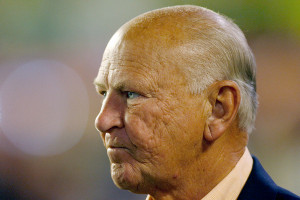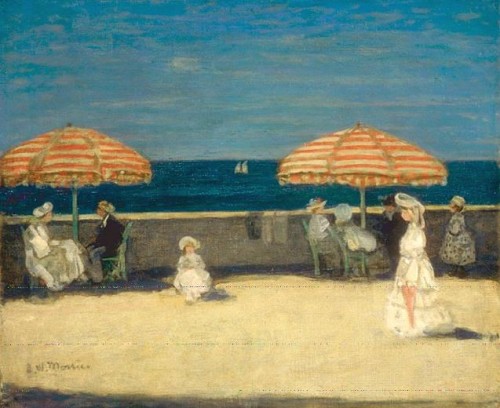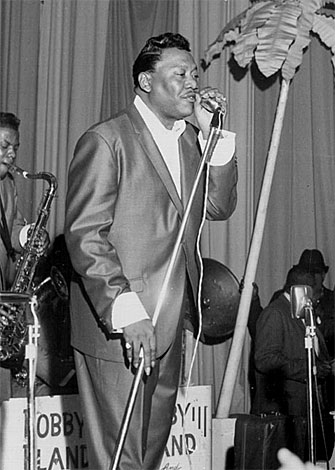
Gueorgui Pinkhassov
“Sports always recapitulates society, in terms of its character, dynamics, and the structure of human relations… We are already in a situation where we are expecting children to play games that they cannot afford to watch.”
Harry Edwards
“To the extent that necessity is socially dreamed, the dream becomes necessary. The spectacle is the nightmare of imprisoned modern society which ultimately expresses nothing more than its desire to sleep. The spectacle is the guardian of sleep.”
Guy Debord
Somtimes sports is a great metaphor, though usually less great than a lot believe. Still, I was reminded of something Tim Green once said in a radio interview. Green was a former NFL defensive end, a college star at Syracuse, and one of the most articulate and thoughtful of professional athletes. He said, one of the things that had changed in sports, compared to the time when he began playing as a boy, was that the idea of sportsmanship had all but disappeared. He said teams, from high school to pro, used to award sportsmen of the year to a player on the squad who best exemplified team play and unselfish committment. Today, he said, most teams have done away with that award. I thought of this when I heard earlier this year that Andrew Bynum had signed with the Cleveland Caveliers of the NBA. Bynum is a seven foot giant of a man, agile and remarkably strong, if not overly skilled, playing basketball. But he has bad knees. He played several seasons for the Lakers, helped them win a lot of games, but he was also mostly always hurt. Still, he contributed enough to help Los Angeles to a title. Bynum was about to be traded because the Lakers wanted to sign Dwight Howard.

Danny Romero, Johnny Tapia

Wayne Huizenga
I was reminded of Harry Belafonte the other day and his public beef with Jay Z. I was reminded that Belafonte once had a major network TV show from which he walked away rather than dilute the casting to make sponsors less uncomfortable. Belafonte was critical of Jay Z. And Jay Z is the Andrew Bynum of corporate hip hop. He attacked Belafonte, but more significant was public response, which seemed to be largely behind Jay Z. Of course in a society of amnesia most people have no idea who Harry Belafonte is. Still, in the case of Andrew Bynum, the corporate owned sports publications never mentioned the fact that Bynum collected a huge salary (and this isnt the germane issue) but that he promised to play and that the team was gutted to make room for his high salary. The narrative was that this was just bad business practice on the part of the Philadelphia Seventy Sixers. And indeed it was. Bynum is a not very smart and self involved young man who is paid a lot and flattered a lot, for being big. He has few skills, in fact, but what he is: he is big. And big wins in the NBA. And this little narrative, like the Belafonte story, illustrates a certain shift toward the fetishizing of gain. Pure gain, divorced from all else. It is the adoration of accumulation, and it erases all other considerations. In another era, the expectation would have been for Bynum to repay the huge salary he recieved by at least signing again with the Philly franchise. As a sign of good faith to his teammates and coach. But then, Bynum never got to know this teammates, and the coach was fired. So, its no doubt unfair to blame Bynum. Now, again, the constant refrain of athletes being over paid, comes mostly from white people. What they are saying is that BLACK athletes are paid too much. Rarely does one hear anything about sports ownership. Only a very rich, VERY rich white class owns major sports teams. That list includes the odious Dan Snyder, owner of the Washington Redskins (who vows to NOT change the racist name of the team, though it was segregationist owner George Marshall who originally named them and who fought integration of the team until 1962), Donald Sterling, owner of the L.A. Clippers, a man who used to take lady friends on tours of the locker room, remarking on occasion at the black male anatomy, and who refused to foot the bill for assistant coach Kim Hughes cancer surgery (the players chipped in to cover it). Rollie Massimino, related his job interview for head coach of the Clippers this way…..
Phipps, half asleep, sat up on his bed and asked what went wrong. “Here’s this guy,” Massimino said, “and he has this blonde bimbo with him, they have a bottle of champagne, they’re tanked. And Don looks at me and he says, ‘I wanna know why you think you can coach these niggers.’”

War criminal and Mickey Arison
Or, Marge Schott, former owner of the Cincinnati Reds, who managed to comment that she still believed in many of the policies of Adolf Hitler (as well as making a series of homophobic slurs, and racist comments about Asians). Or, Wayne Huizenga, the irrational and volitile owner of the Miami Marlins, who sold off the team and pocketed the money, essentially, although already a millionaire ten times over, or George Steinbrenner the Yankee owner convicted of illegal political contributions to Richard Nixon, or Clay Bennett, the owner of the Oklahoma City Thunder, and son in law of Edward Gaylord, media mogul, associate of the Bush family, and all around reactionary creep, or Mickey Arison, the Israeli/American cruise ship mogul, former business partner of notorius Israeli buisnessman Meshulam Riklis, who notably is credited with inventing junk bonds and leveraged buyouts, or Rich DeVos, owner of the Orlando Magic and fanatic right wing Christian billionaire, owner and founder of Amway, or Stan Kroenke, owner of the St.Louis Rams, and builder of strip malls, or Stephen Ross, owner of the Miami Dolphins, a tax attorney who specialized in protecting slum lords and building tax shelters for buisnessmen accused of defrauding the public housing sector, or Dan Gilbert, owner of the Cleveland Caveliers, and a mortgage lender, or Herb Simon onwer of the Indiana Pacers, another mall developer and chisler of public funds, or Steve Bisciotti, the death merchant owner of the Baltimore Ravens, an aerospace tycoon with holdings in several defense businesses, or William Clay Ford, owner of the Detroit Lions, married to Firestone heiress Idabelle, and the man who ran Ford motors (into the ground), or Alex Spanos, owner of the San Diego Chargers, and largest single contributor to George Bush’s election campaign, as well as real estate thief and migrant worker slum lord. Or Jerry Jones, the owner of the Dallas Cowboys, and former head of Arkoma Oil, which merged with Arkla Natural Gas, in Louisiana, both of which companies were sued for tax fraud and theft of public funds.
Corry Cropper remembers Jones rise to power this way…
“So, how did Montgomery Burns ‘Jerry’ Jones achieve the tycoon status necessary to purchase the Cowboys? He did so by swindling his own. After several failed business ventures in the 60s, the Little Rock native and former Arkansas Razorback stand-out hit it big in the 70s in oil and gas prospecting with the Jones Oil and Land Lease. However, the mythical image of Mr. Happy-go-lucky striking it rich, forwarded by Jones, is but a veneer for a hardened businessman who sold out his own for millions. Jones began drilling in Oklahoma and quickly returned back to his native Arkansas, pillaging the Natural State. Then, when his company expanded into California and Canada, how did he honor his roots: by enacting a veritable stranglehold on fuel prices through the infamous Arkla-Arkoma deal that effectively drove up fuel prices in Arkansas (and elsewhere) – a state still reeling from the Grand Gulf Affair.”

Jerry Jones

Allesandro Gallo
The white business tycoon, who buys a sports team as a toy, represents the new Plantation owner. And rarely, and maybe never, does one hear anything about how Arison, or the DeBartolo or Irsay or Simon families made their money. The ruling class rules by proximity and access. Wellington Mara (former owner of the New York Giants) is the paternal grandfather of Rooney and Kate Mara, both now at least A- minus list Hollywood stars. Coincidence?
One of the things I recognized when I signed at William Morris, and found myself suddenly being given writing assignments, was that I was unprepared for the class designation. I was the wrong class. And they see it in your eyes, they know. You are allowed in for a while as a novelty act, the organ grinder’s monkey, but eventually such intrusions are too disruptive. I mention this because one of the obvious and established myths on the U.S. is that of “anyone can become a millionaire”. And indeed, NOT everyone can. But many can. However, the requirement for becoming a millionaire is the mortgaging of your humaness. Leave your compassion and morality at the door. The truth is, success is largely the result of who your parents were. And the rich have little, very little, understanding of what life is like for the millions born into poverty. Athletes have short shelf life. A good many, even today in an era of improved saleries, end up broke or forced to sell their memoribilia just to pay the rent. A few do well, become business savy, or hook up with a sports network for insider commentary. But many many do not. Still, the narrative is “how dare a black athlete get paid millions of dollars just to throw a ball”. And in truth this is the narrative often for white athletes as well. But do you hear, “how dare public tax dollar go to build a stadium in bankrupt city with high unemployment and homelessness”. Which in fact happened….as Dave Zirin wrote:
“The headline juxtaposition boggles the mind. You have, on one day, “Detroit Files Largest Municipal Bankruptcy in History.” Then on the next, you have “Detroit Plans to Pay For New Red Wings Hockey Arena Despite Bankruptcy.” Yes, the very week Michigan Governor Rick Snyder granted a state-appointed emergency manager’s request to declare the Motor City bankrupt, the Tea Party governor gave a big thumbs-up to a plan for a new $650 million Detroit Red Wings hockey arena. Almost half of that $650 million will be paid with public funds.
This is actually happening. City services are being cut to the bone. Fighting fires, emergency medical care and trash collection are now precarious operations. Retired municipal workers will have their $19,000 in annual pensions dramatically slashed. Even the artwork in the city art museum will be sold off piece by piece. This will include a mural by the great radical artist Diego Rivera that’s a celebration of what the auto industry would look like in a socialist future. As Stephen Colbert said, the leading bidder will be “the museum of irony.” They don’t have money to keep the art on the walls. They do have $283 million to subsidize a new arena for Red Wings owner and founder of America’s worst pizza-pizza chain, Little Caesar’s, Mike Ilitch, whose family is worth $2.7 billion dollars. (“Friends! Romans! Countrymen! Lend me your pensions!”)”
The corporate and Wall Street ownership of Detroit is complete. It is the first of many more to come. Glenn Ford wrote, on Detroit;
“Two items in the news this week put in graphic relief the overarching reality of our times: Wall Street is every day tightening its dictatorial grip on the political and economic life of the United States. The American state and economy are being relentlessly restructured in order to further consolidate the rule of finance capital. In the largely Black urban centers of the nation, the oligarchy intends to rule directly, without the inconvenience of meaningful elections and the other trappings of democracy.
Detroit proves the point. This week, a judge begins a bankruptcy court trial that will decide if local corporate dictator Kevyn Orr, the emergency financial manager imposed by the state to protect the interests of Wall Street, will essentially be allowed to sell Detroit’s assets to a British bank in order to pay off the city’s debts to American banks. The pensions of city workers may also be gutted in the process.
The city council of Detroit this week voted unanimously against the deal, but that is probably irrelevant, since the emergency manager law has stripped all power from Detroit’s elected officials. Democracy is dead in Detroit, as it is in all of Michigan’s largely Black cities, every single one of which is now run by a corporate dictator. The majority of Michigan’s African American citizens have no more electoral rights than did Blacks in South Africa under apartheid.”

James Wilson Morrice
The narratives are repeated over and over. For big time sports today, the big time business of sports, there is a gladiator apprenticeship system in place. The owners, alumni of big Universities, and agents scour the underlcass communities for talent they can extract. The same communities attacked by the system these agents and owners represent. Star athletes are picked out as early as 12 years old. If a boy can throw a baseball in the 90 mph range at the age of fourteen, he can rest assured he will get signed early by a big league team. What he can’t be sure about is how well his elbow will hold up. It is impossible to count the number of young pitchers who blew out their elbow during high school and college. The NFL (as I wrote about before) has a concussion problem. The league has done its best to cover it up, but it’s a story that won’t go away. Mothers are thinking twice now about having their sons play high school football. The point is, there is a high attrition rate for aspiring pro athletes. No such attrition rate for owners. The underclass is there to be plucked and groomed for later use as amusements for the ruling class. Now, of course people will quickly jump up and point out that the working class are the greatest consumer of mass sports packaging, and this is true. And I’d be the last person to suggest there isnt a hugely progressive side to athletics. Even to a degree with regard to big time sports business. There is an undeniable beauty to the best athletes, and I can find no way to disparage my memories of watching Jerry West and Elgin Baylor and Kareem. Or seeing an aging Willie Mays in person, or Koufax, or when even younger an aging Duke Snyder and Gil Hodges. Sports can be evocative, and athletics can create compelling narrative. Watching ringside as Johnny Tapia upset Romero in the battle of New Mexico. The look on Tapia’s face when Romero wouldnt embrace him after the fight. Mi Vida Loca was written on Johnny’s trunks, (later tattoed on his abdomen below the Virgin of Guadalupe) and that fight was for love, for everything Danny Romero had (a father, good looks, popularity) and that Johnny didn’t. Tapia came out of prison to win that fight. Tapia grew up in the shadow of his prostitute mother’s death, which he witnessed as a child. So, that was drama. It was tragedy. Still, it was also an obscenity and was moral social failure.
I think one of the conundrums of an analysis of Capital is met with right at this point. Rich kids don’t become fighters. Rich kids rarely become football players. Rich kids don’t spend six years in the minor leagues trying to get a shot at the major leagues.
That story will be pitched {sic} in various print media, sports pages and the like, as a saga of sacrifice and courage. Or rather it will be, “IF” that particular player makes it to the bigs. The countless young athletes who wash out, and become used car salesmen, or high school coaches, or drunks on skid row, or men living under bridges; well, those stories won’t get told. The narrative is one of heroic achievment. But its only heroic if you get a big contract in the final chapter. The sports world still has a hard time knowing what to do with Pete Rose.

Christian Dotremont
So in a sense, there is a problematic essentialist reading about sports that parallels the leftist critique of culture and art. The disparaging of sports, because of a putrid caste system does a disservice to the genius of those unique talents who do come from the underclass. From out of a landscape of hopelessness comes grace and transfigurative gifts. Watching Larry Bird, the awkward and unattractive gym rat from French Lick, Indiana was something akin to wonder. Watching Bill Russell, or Clyde Drexler, or Don Drysdale… there were sub narratives of genuine resonance. But for every Michael Jordan, there are a thousand marginal big league players who collect modest checks for a half dozen years (or less) and then fade from public view. They have trained and played and devoted their young lives to a sport that sees them as utterly disposible. Most leave the game without health coverage for the vast array of injuries that they carry with them for the rest of their lives.
http://espn.go.com/nba/story/_/id/9127086/former-nba-player-javaris-crittenton-indicted-charges-murder-gang-activity
Crittendon is only the most recent in a long list of former professional athletes who fell into crime and poverty and desperation. From Billy Cannon in the sixties, to Ryan Leaf, Dave Megget, Rae Carruth, Nate Newton, Dexter Manley, Eddie Johnson, Jayson Williams, Mel Hall, Mercury Morris, Jamal Lewis, and Thomas ‘Hollywood’ Henderson. The list goes on. The case of Mercury Morris, former star running back for the Miami Dolphins reads like an American tragedy, but one with a somewhat mediated final act. That Morris now assists former NFL players suing the league for early onset of dementia due to concussions makes for a strange irony I suppose. That the majority of these offenses are either for drugs or sexual assault says a good deal about the culture of violence as well. The system makes money for the owners. Makes money for the league and for media and mechandisers. It also exploits young men whose talent is pampered and whose lives are sheltered and whose every whim is catered to, because, well, they generate money. Mostly for the leagues, but for themselves as well. (though far less). The complexity of a discussion of celebrity worship has to be examined in all this. Any memoir of star athletes will contain a chapter about women hiding out in Hotel stairwells, in parking lots, anywhere, everywhere, for a chance to sleep with one of the players. In one way, this is just sexual shopping, and the allure of money. And the groupie phenomenon is worth a whole posting, probably. On one level there is something demystifying (per Germaine Greer) about simply applying market conditions to sex. There are obvious specializations involved (astronaut groupies for example, and staff in Cocoa Beach hotels can attest to this) but in the end, it is the pathologizing of desire under a system that foments pathologies. Specialization, the illusion of choice, and more, there is a Reichian critique sort of begging to be made. It is commodifying sex on the one hand, while reversing the roles of hunting sexual prey, of conquest, and it is also an exercise in self loathing at all levels on which it happens.
The marketing of women’s sports could best be seen during the U.S. women’s “soccer” team’s road to triumph in 1998. Harry Edwards said this in answer to a question by Colorlines:
“CL: In the last year many people have spoke about America’s love affair with the women’s world cup team as an example of America’s, and the sports world’s, advancement in terms of gender issues. How much progress do you see?
HE: Progress is a very, very difficult concept to quantify. It is very difficult to measure qualitatively, in terms of the reception that a team, such as the women’s soccer team got. In examining progress you realize how complex the entity really is. I think that one needs to look beyond the sited reception to other things to get some indication.
So when we look at the women’s soccer team, we, first of all, see that the team was projected as an all-American, family-oriented team, which was a sideways suggestion that the team was not about those lesbians. It was also projected as a substantially “white-girl-next-door” team, which was again, as one person stated outright, to provide an example to counter the bad behavior of men in men’s sports, which is to say black men in particular. They are looking at the Lawrence Phillips’, Dennis Rodmans’, O.J Simpsons’, Jim Browns’ and quote countering that image. Neither the all-American girl team, nor the “white-girl-next-door” has anything to do with women’s sports.
In other words, the reception at those levels was not a reception for the women’s soccer team, but a reception revolving around the utility of the women’s soccer team by those who would keep things pretty much the way they are. And of course this is evidenced in the kinds of endorsements some members of the team received following the World Cup. You had, for example, soccer Barbie, which is one of the most sexist images in American society. The soccer Barbie thing was indicative of the utility of the women’s world cup team for conservative propaganda interests. Then, of course, the athletic bra endorsement that Brandi Chastain got was again indicative of the maintenance of traditional images of women. It would be the equivalent of giving Sammy Sosa or Mark McGwire the Jockey jock strap endorsement, indicative of masculine and masculine sexual focus. The athletic bra endorsement was again about keeping women essentially subjugated.”

Courtside, Miami Heat game
But of course, the society of the Spectacle remains the enforcer of race and gender hierarchies. There seems to be a new rise in apologetics for media and corporate marketing. I see it in a lot of quasi-left publications, and in almost all liberal sites. There is lurking in this a valorizing of individualism. The idea that if you are a hip enough shopper, you wont fall prey to the crude mechanisms of marketers. The truth is, you are effected anyway. I think however, the question becomes what does “effect” mean exactly? The post modern definition which suggests that the essence of post modernism is a distrust of master narratives is perhaps not completely correct. Post modern collage is its own new master narrative. It is the master narrative of shopping. Shopping is marketed as fragmentary– though in another sense, as a whole. As convenient, often. I’m not sure it is any of those things, finally. Shopping is predicated on a manufactured idea of individualism. One becomes an individual by exercising shopping freedom. And you cannot avoid making these choices. That is what is infernal. The platform before one, on a daily basis, is a shop display. Thousands of binary demands are exercised daily, non stop. So the business of big corporate sports is also a series of preference choices. Its being a fan. I am a Chicago Bulls fan. I’m further, a Derrick Rose fan. And now, you can choose the “I’m not choosing” button. Wait, drinking this brand of beer is a sign of Bulls loyalty, because it is sold at the arena.
There are now leftist media consultants. And there are the media friendly critics of such consultants. But this fan posture never leaves the discourse. And fan postures enhance reification. There are obsessions about stats, which began, really, with baseball but have migrated to all sports now. There are cottage industries built around statistical analysis of sports. And again, there is a strange colonial aspect to this. Recruiting is about taking out of the community, those with special skill sets. The white managerial class, the accountants and the financial advisor now supply this methodology. The further objectify the athlete. The athlete is only a stat sheet. Even his injuries factor into the computation. Some players are viewed as “high risk”. During the yearly NFL draft, analysts will discuss the “off field” problems of certain prospects. “Character” is now a statistical consideration. The game is increasingly experienced as a spread sheet. The rise, in almost exclusively white male American culture of “fantasy leagues” is another dimension of this distance. Spectator sports have always had a sort of Roman Circus quality to them. It is a faux tribal construct. The individual chooses what items to buy, as well as choosing what games to watch. Consumers are defined by their choices. There is an ironic layer here, among the educated white 20%, who partake of spectator sport as an inside joke. It’s part of being hip, it is a kind of populist facade. The imitation of the more serious working class fan. There is a sort of mocking that goes on. Celebrities show up at games, front row (most notably at NBA games). Its a contest for who gets the best seats. The entire sports spectacle fits neatly into a consumer culture. The athletes are temporary items of consumption. Their labor is purchased, and a new line of athletic merchandise comes out next season. In fact, the draft for both football and basketball, is now a televised event. It’s a bit like an open air market for beef on the hoof. The expert consumer is catered to, the white fantasy geek is valorized, is made an insider and flattered.

Alan D’Arcangelo
Ideas such as sportsmanship are left in the distant past. Rarely does one even hear such terms. The rise of finance has also engulfed spectator sports beyond just vocabulary. ESPN devotes a good deal of air time now to the analysis of the financial health of various organizations and teams. “Cap space” is discussed in relation to trades and long term planning for the ‘franchise’. Big money spectator sport serves several purposes in reinforcing the status quo. The stories, like the athletes, are disposible. They are easily forgotten, and are designed to be forgotten. They serve as kistch narrative, too, with an imposition of nostalgia and built in (and marketed) associations with patriotism, freedom, and courage. If all stories, all narrative, is crime narrative, then ‘sports’ are purely kistch, and function as anti narratives. When I was a boy, we had baseball and football cards. Each card with a picture of a player on it. We traded them, and hoarded them, and catelogued them. The adult fascination and identification with spectator sports is just an enhanced version of these childhood fantasies. But because the adult cannot really tolerate the idea of being adult, there is a sense of bad faith attached. Men gamble more money on American football games than any other area of gambling. And 90% of it is illegal. It is a huge grey economy. The real channel for desire in sports is in the fetishizing of betting, and in the strange morality play of celebrity worship, that now has travelled down the aisle of morbidity to a rising rape culture in the U.S. In one sense, the male dominated arena of big money sports serves as catalyst and semi-ironic emotional form for justifying violence against women. That most of the crimes of pro athletes are sexual assault or domestic abuse, is no accident. This is the arena (one cant escape sports metaphors) for the dehumanizing of women, a template of proof for the natural rightness of power and physical strength. Strength in the service of only winning; as part of a spectacle of physical specialness. The frat boy (mostly white) University domain of rape is modeled on the pro athlete’s ability to “have” whoever he wants, and have them in whatever way he chooses (with a fair amount of anger and envy thrown in). Violence is built into the fabric of big time money sport. The days Tim Green recalled were a time of where at least in theory the focus was on competition. Competing was building character, teaching fairness, and the lessons of how to lose. The toxicity on display in the Joe Paterno saga suggests the absolute loss of even this fig leaf. It is too easy, though, to blame sports per se, however. Calls for the banning of sport end up only another attack on the poor. On the youth clutching at impossible odds for success. It is all well and good to demand genuine outlets for the young, genuine education and opportunity, but until that time arrives, if it ever does, the denial of some chance to evince an ability to transcend the brutality and futility of daily struggle, is just more cruelty. For there is, at its best, a potential, still, for great transformative beauty in athletic expression.

Rachel Whitehead
The collective bargaining aggreement in pro basketball is a curious example of the impossibility of professional sport’s survival. Where the idea was to free individual players from their total dependency on team ownership of their talent, the result has been to turn the league over to agents and shoe company marketing experts. The New York Knicks is completely run by CAA now. Players protect their brand, often at the expense of their team’s success, and GMs and coaches must consult agents and reps from Nike and Addidas before making any personel decisions. The league has also suffered twenty years under the worst commissioner in all of pro sport history, David Stern. The league is marketed to a black audience and consumer base, and to white youth and an urban white hipster culture, in much the same way Jay Z. and a lot of rap is marketed to white boys. Stern made sure big market franchises (L.A. New York, Chicago, or glamour teams like the Heat) prospered, and TV deals and starting times favored the select franchises. Coupled to this the obvious collusion with the officiating crews has meant that one must really suspend disbelief to still enjoy the game. The narrative drama of competitive sport increasingly feels like the rigged regulations of Wall St.
The destruction of education, its instrumentalizing, and the new ethos of business guidance has meant that students look at school much as customers look at any service institution. Students are indoctrinated in values of business cunning, they are taught ruthlessness, and self interest. Competition is for the reward of better paying jobs (or any job), and this mirrors the big money sports value system. Just win baby. The climate of college sports is just a slightly less feverish version of professional sports. In fact, college sports is essentially training for pro sports and so the quality college athlete is treated as special, is catered to by alumni, and groomed as race horses are groomed. For the rest, their survival depends on learning the skills of the loanshark or pimp. It is, as Henry Giroux puts it, a climate of foreclosed hope. For most students, the instruction is in a predatory value system, in which domination extends both to markets and women, and in which compassion is weakness. If you attend public schools, grade schools, where metal detectors greet you at the door, where armed guards patrol the halls, and where essentially you are taught how to take tests, not to learn, then the results of this process should not be surprising.
A final unrelated note. Its been one of those weeks where I have run into a number of people, young mostly, who I consider smart, and informed, and a few others I consider less so, but all of whom have spoken of film and/or the death of Lou Reed. First, I find there is such an inability to find critical vocabulary for art, that often people fall back upon cliches. Terms like dramatic tension. As if that had ANY meaning. That means nothing. Define tension. Does it mean suspense? OK, what does THAT mean? Or to call something boring. Well, I admit things can be and are boring. But often I feel as if boring is the result (in the minds of critics) of a failure to listen. So here is the problem in a nutshell. The best screenplay I know is The Hustler. written by Robert Rosen. It was written after he snitched at HUAC. Its about cowardice and guilt and redemption, or attempted redemption. Is it dramatically tense? Not in any conventional sense, I don’t think. The ways in which literature is taught in public schools (at least in the U.S., but I’m guessing the UK to a lesser degree, but most of Europe) is to traffic in these reductive and all but meaningless cliches. The term “dramatic tension” should never be used. If one is attempting a critique, then I would shy away from the word ‘boring’ as well, or to complain about structure per se. I know that often the word “conflict” is introduced in writing workshops. Again, it’s a mostly meaningless term. If I screw in a lightbulb, am I in conflict? What is the bulb doesn’t work? These terms get in the way of hearing and seeing what is there. If one looks at the late modernism on up to the present; one could take Broch and Bernhard, and Sebald and Beckett and then perhaps Robert Stone and James Kellman for novels, and others such as Carver and Ford and Genet and O’Connor if we want to go back that far. My point is, do any of these writers exhibit dramatic tension? Dramatic tension is what studio execs ask for when they can’t think of anything else to say. It is what high school English teachers say when they teach you how to “interpret” Scarlett Letter. Now, if this is extended to theatre and film, the mediating effects of actors enters the discussion. That is an entire posting onto itself. One of the problems with seeing and hearing what is happening on screen is the obfuscating effect of bad acting. But more on that in another post.

Bobby Blue Bland
I was struck by the outpouring of love and worship for Lou Reed this week. I admit I never quite ‘got’ that whole thing. I was in NYC for much of the 70s, and I didnt get it then, either. I didn’t get the Velvet Underground. There was a New York aesthetic that included village hip CBGBs bands, and my friend Ork managed Television, so I was forced to have a certain awareness of the back room at Max’s, and the factory hangers on. But Bobby Blue Bland died this past June. I saw few mentions of his death and few obits. I had no interest in Reed. In the same way, I cannot muster much enthusiasm for Patty Smith. Maybe its an east coast/west coast thing. But Bobby Bland meant something. So, I leave off with a short video of Bobby Bland, a significant voice for R&B over the last fifty years. Bobby left school in the 3rd grade, and worked in the cotton fields. He made his way to Memphis, hanging out with other R&B musicians like Johnny Ace, and Roscoe Gordon. Bland’s audience was black, mature and mostly female. He had only two cross over singles that really made any impact, but he was a constant on the R&B charts. He sang with an emotional artistry few others ever reached.

Really great. The genius of sports and the business of sports. Sports is one of the healthier escapes out there as it perpetuates no myth, (some would argue this I know) but rather an engagement in drama as it happens. Behind it, and underneath it remain everything that you pointed out. How do you explain to a sports hating lefty (lol) the Lakers v Celtics rivalries of the 80’s?
Sports “…is the sigh of the oppressed creature, the heart of a heartless world, and the soul of soulless conditions. It is the opium of the people.”
from campus safety magazine…..
“College men who participated in aggressive sports (including football, basketball, wrestling and soccer) in high school used more sexual coercion (along with physical and psychological aggression) in their college dating relationships than men who had not. This group also scored higher on attitudinal measures thought to be associated with sexual coercion, such as sexism, acceptance of violence, hostility toward women and rape myth acceptance.”
I wonder how the business school frat boys scored
http://www.youtube.com/watch?v=MC0ePxSp6yQ